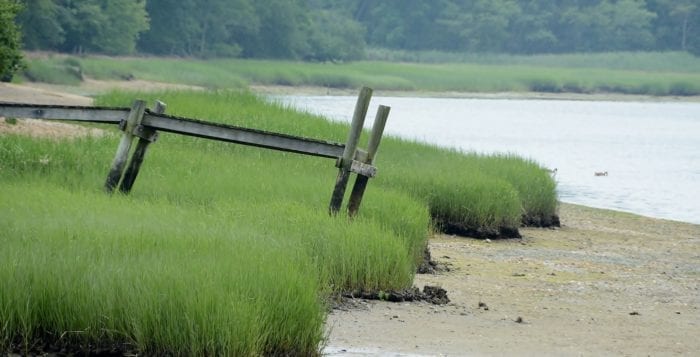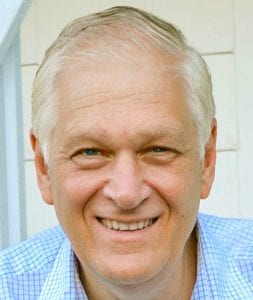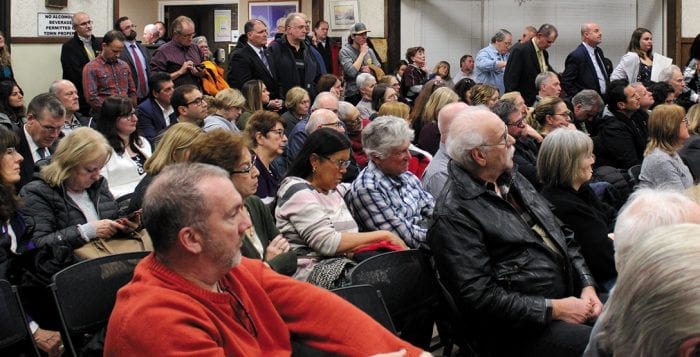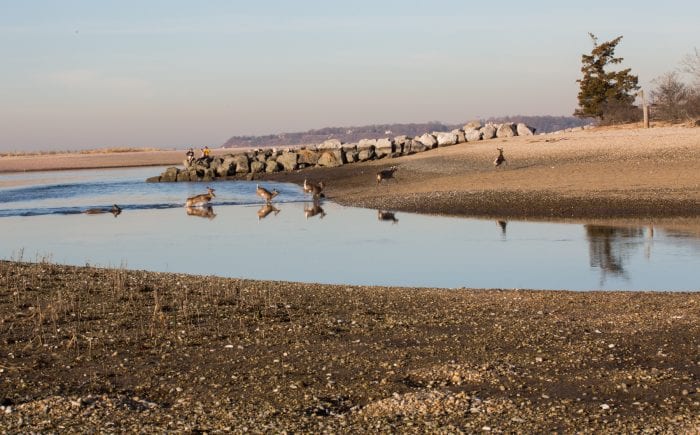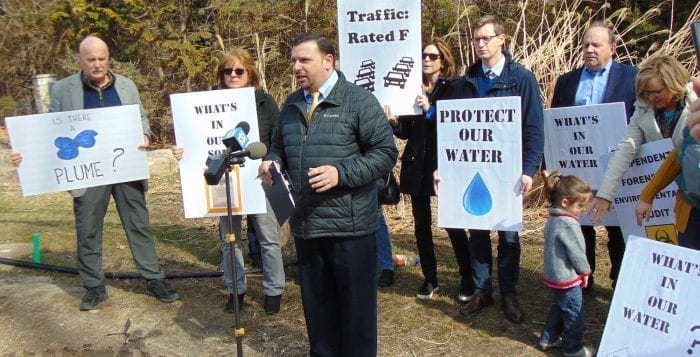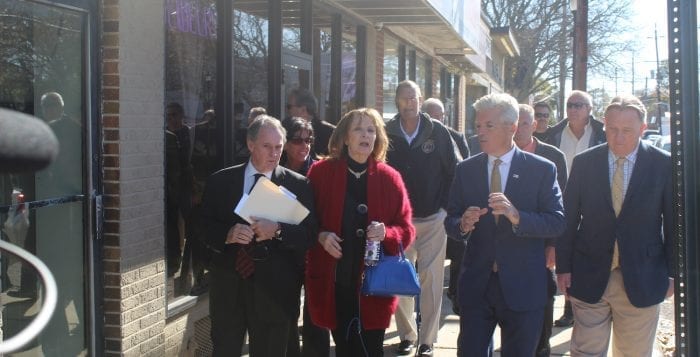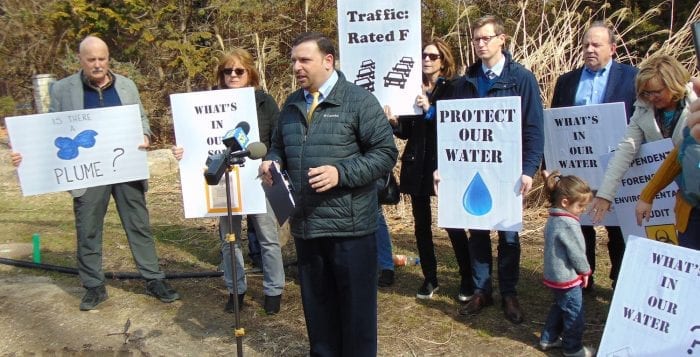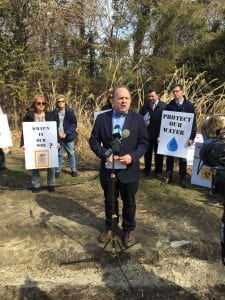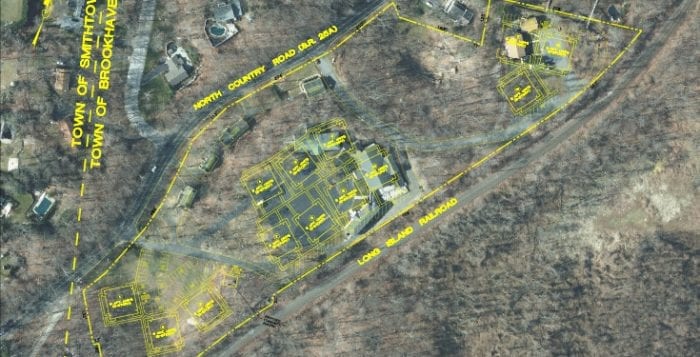It is most unfortunate that state Assemblyman Steve Englebright [D-Setauket] has elected to mischaracterize and misrepresent the environmental facts in his effort to stop the proposed development on the Gyrodyne property (Aug. 6, 2020 op-ed, “The Gyrodyne Project Threatens Stony Brook Harbor”).

What Englebright has failed to recognize is the significant reduction in nitrogen loadings to Stony Brook Harbor that will be accomplished by not only hooking up all the existing as well as new buildings on the Gyrodyne property but also the construction of a new state-of-the-art advanced wastewater treatment plant that will reduce the nitrogen concentration of incoming wastewater by over 85 percent. The proposed plant is actually less than 5 percent of the capacity of the Stony Brook University plant which processes, in addition to the university wastewater, hundreds of thousands of gallons of wastewater daily from the Stony Brook Medical Center and discharges into Port Jefferson Harbor.
Additionally, typical nitrogen concentrations from the septic systems of homes and businesses surrounding Stony Brook Harbor are seven times greater than what this advanced treatment plant will discharge. This area includes the unsewered Stony Brook University Research and Development Park operating on onsite septic systems, located on the 245 acre parcel seized by the university from Gyrodyne through an “eminent domain” action back in 2005 when Gyrodyne was attempting to build a residential golf course community. It also includes the business corridor of St. James which the Town of Smithtown has asked Gyrodyne to consider connecting into its treatment plant when it gets built. The Lake Avenue business area presently discharges high nitrogen loadings that flow into Stony Brook Harbor. The Gyrodyne board has consented to consider such request.
This is a subject area of which I have considerable knowledge and experience. I possess undergraduate and graduate degrees in marine engineering and marine and environmental science respectively. As a licensed professional engineer, I have decades of experience in wastewater treatment and environmental protection projects. I have served in pro bono executive board capacities of environmental and planning organizations and am presently serving in a management role on the Long Island Nitrogen Action Plan, a program that is specifically addressing nitrogen pollution of Long Island’s surface waters which is responsible for harmful algal blooms, eutrophication [overly enriched with nutrients] and fish kills.
As greater than 70 percent of Suffolk County is presently unsewered, onsite sewage disposal systems have been identified as the primary cause of nitrogen pollution of the county’s surface waters. Increased sewering and installation of innovative and alternative on-site septic systems is rigorously being pursued by the county with the support of the state.
Gyrodyne’s proposed mixed use development project is anticipated to include assisted living, commercial office and a hotel. Of the 75 acre site, only 26 undeveloped acres are planned for new development. A significant portion of the site will be dedicated to natural and managed landscape with a substantial buffer along Route 25A. The mix of development uses was selected to not only satisfy market demand but also to minimize external environmental impacts from a traffic as well as wastewater perspective. Traffic mitigation at the intersections of Route 25A at Mills Pond Road and Route 25A at Stony Brook Road are planned as part of the project’s traffic mitigation plan, as well as other improvements. w
Another point raised in Englebright’s letter stated concern from Professor Larry Swanson of Stony Brook University regarding potential medical office use on the site. Medical office use was studied as part of the comprehensive environmental impact analysis performed, including projected sanitary flows and traffic generation analysis, though there is no definitive plan that medical use will occupy any of the commercial office space if developed as part of the Flowerfield subdivision. If included, it would be a low wastewater generator as opposed to a hospital or other use. That use determination will depend upon the office market at the time of development.
Swanson also cited concern over the soils at the Gyrodyne site. A detailed investigation of the soils was conducted by another environmental engineering firm which specializes in environmental testing and remediation. Their report states that although sampled soils at the site meet restricted residential standards, which are applicable to the planned future use of the property, construction generated soils at the site will be managed in accordance with applicable regulations.
What both Englebright and Swanson have failed to acknowledge is the fact that the significant amount of nitrogen and other pollutants that are discharged into the ground from onsite systems ultimately reach the harbor thereby adding loadings far in excess of what would be present if the wastewater were treated in an advanced wastewater treatment plant.
In closing, I would like to state that the proposed development of the Gyrodyne property has been designed to provide a smart, balanced and environmentally responsive development plan. As Gyrodyne’s consulting engineer for over 20 years, I can attest that the company’s board of directors, represented by a number of local community members, has always prided itself as being a good neighbor to the greater St. James and Stony Brook communities. This plan is reflective of that continuing commitment.
John D. Cameron Jr., P.E. is a managing partner with Cameron Engineering & Associates, LLP.

